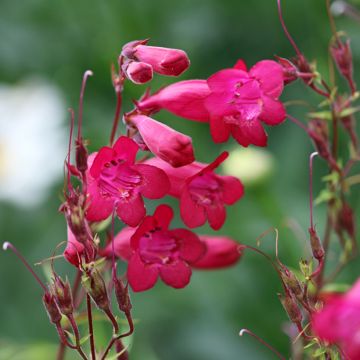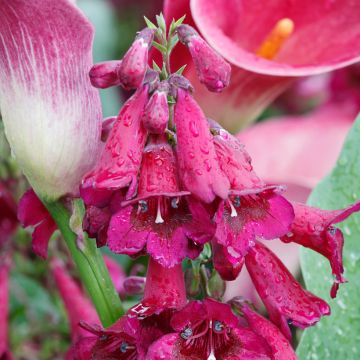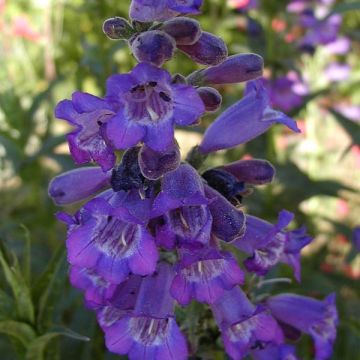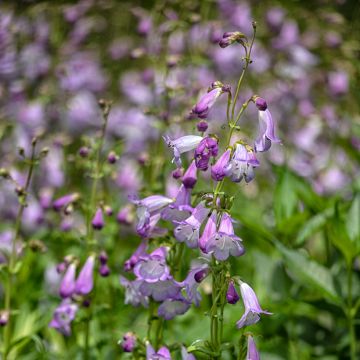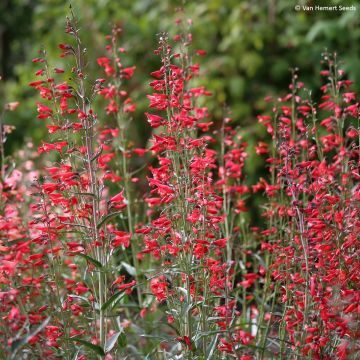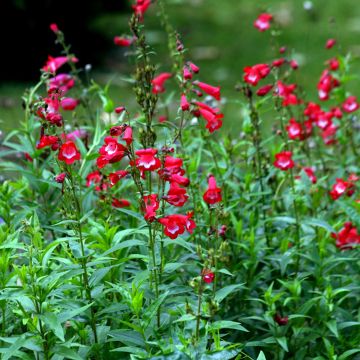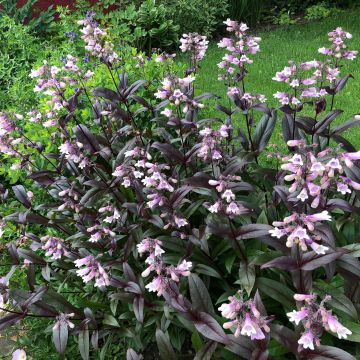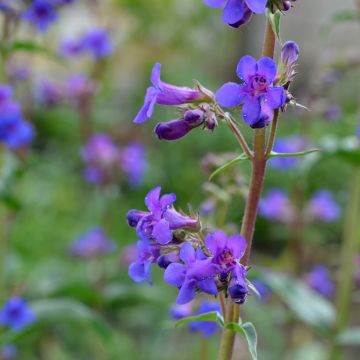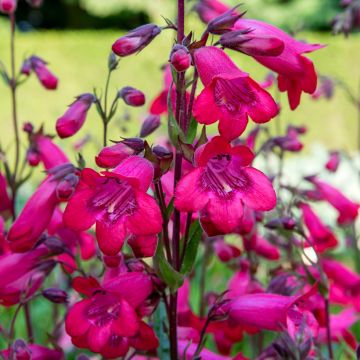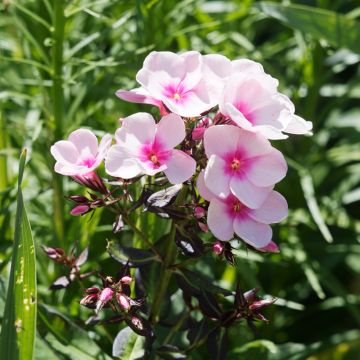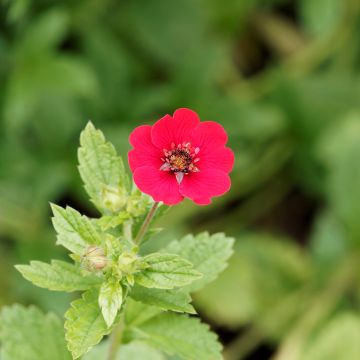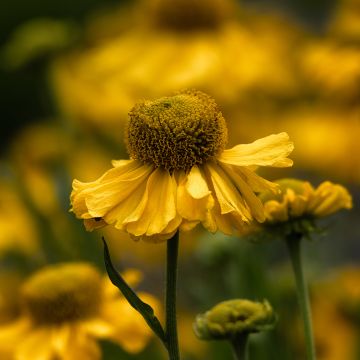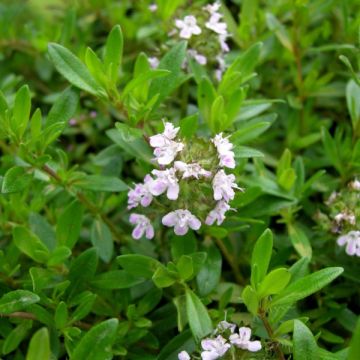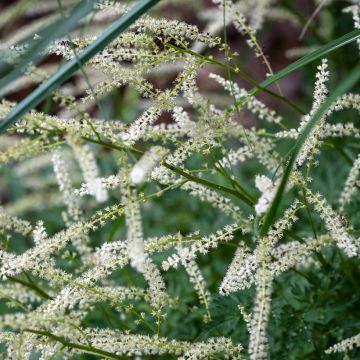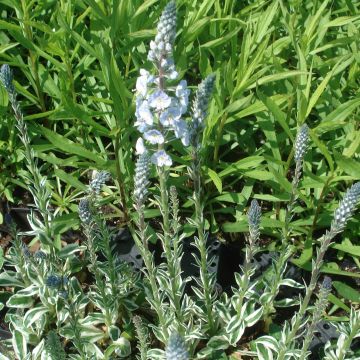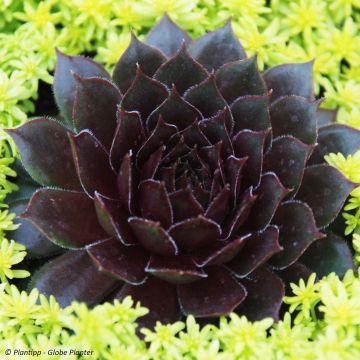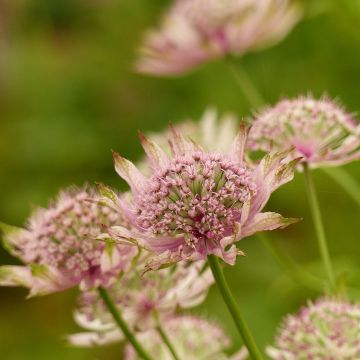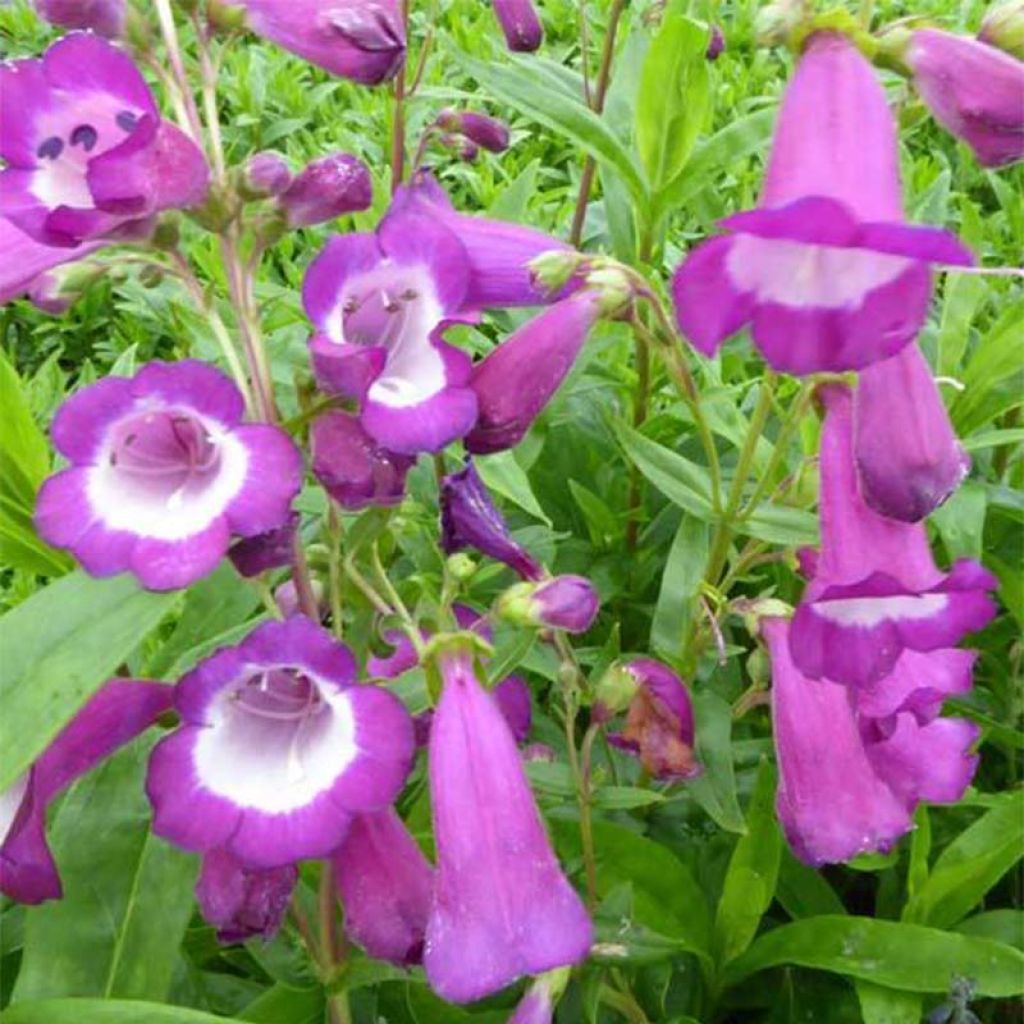

Penstemon hybrida Purple Passion - Beardtongue
Penstemon hybrida Purple Passion - Beardtongue
Penstemon x hybrida Purple Passion
Bellflower Beardtongue, Canterbury Bells Penstemon
Gorgeous flowering, lots of flowers.
Jp, 23/08/2021
This item cannot be shipped to the selected country
Delivery charge from €5.90
More information
Schedule delivery date,
and select date in basket
This plant carries a 12 months recovery warranty
More information
We guarantee the quality of our plants for a full growing cycle, and will replace at our expense any plant that fails to recover under normal climatic and planting conditions.
From €5.90 for pickup delivery and €6.90 for home delivery
Express home delivery from €8.90.
Does this plant fit my garden?
Set up your Plantfit profile →
Description
The Penstemon hybrid 'Purple Passion', often called Vine-plant, offers a seductive summer flowering with powerful and enchanting shades. From the month of July, beautiful bell-shaped flowers open, revealing a white throat and a robe between lilac and violet. This medium-sized perennial forms a beautiful bushy shrub with delicate and elegant foliage, which can remain in winter under suitable climates. Preferring the sun and being slightly sensitive to cold, it should be protected in cold regions. It brings colour to summer bouquets.
The flowers of the Penstemon resemble those of foxgloves. They indeed belong to the same family: the Scrophulariaceae. They are large bell-shaped flowers arranged in tiers on the upper part of the stems. As its name suggests, the shades of 'Purple Passion' will be between red and violet. Sometimes leaning towards lilac, sometimes towards violet, they have beautiful, intense, velvety reflections that contrast with the white interior of the bells. They easily reach a height of 60 cm (24in) and are carried by slender reddish stems punctuated by lanceolate green leaves, receptive to the slightest breath of wind. These leaves often sag slightly, and the shrub spreads over 50-60 cm (20-24in) wide. The foliage is semi-evergreen if winters are mild.
This perennial loves the sun but appreciates keeping its feet cool for a more beautiful flowering. It will, however, tolerate periods of temporary drought. It prefers neutral, rich, well-drained soils and tolerates frost between -5°C (23°F) and -10°C (14°F) if the soil is not too compact. In cold regions, it will need protection.
Penstemon 'Purple Passion' has rich colours that look beautiful in sunny flower beds and bouquets. It can be paired with pale and transparent colours to create a contrast or bold tones to create an ensemble. Our 'white, pink, purple' inspiration can help you find the perfect living companions for it. The shades of 'Purple Passion' range from pink, and blue, to violet and are prized for their natural and romantic appearance.
Report an error about the product description
Penstemon hybrida Purple Passion - Beardtongue in pictures
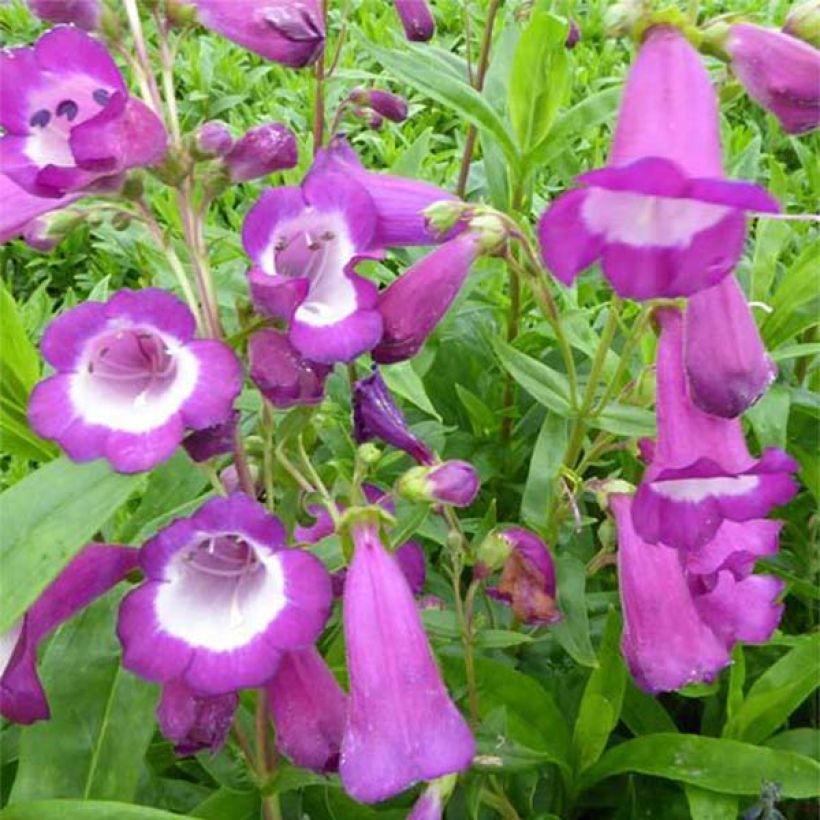

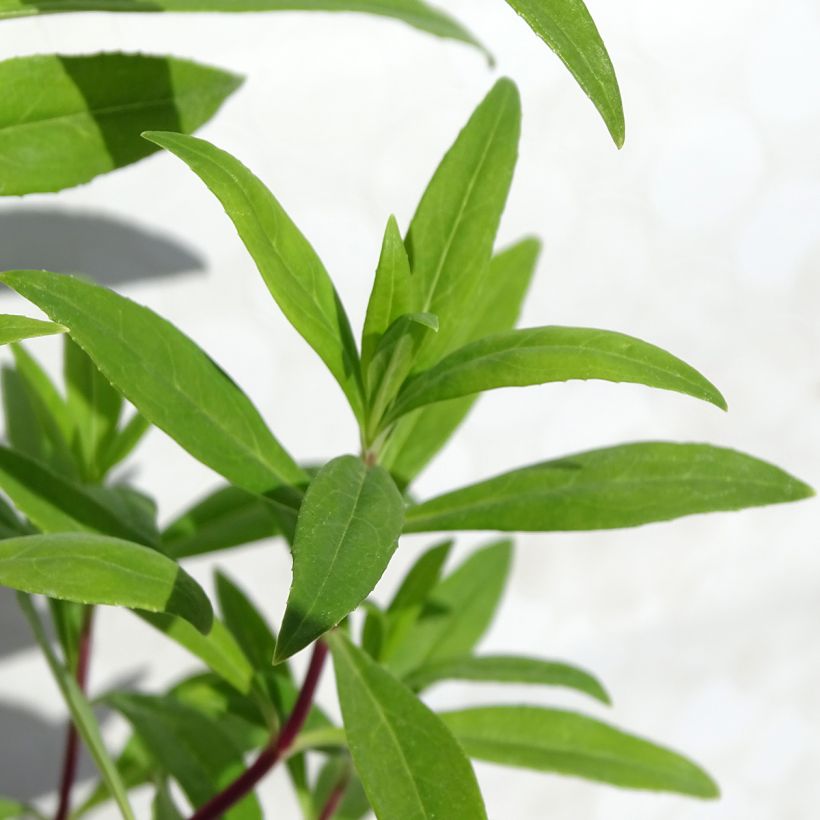

Flowering
Foliage
Plant habit
Botanical data
Penstemon
x hybrida
Purple Passion
Scrophulariaceae
Bellflower Beardtongue, Canterbury Bells Penstemon
Cultivar or hybrid
Other Penstemon
Planting and care
To grow hybrid penstemons successfully, it is important to pay attention to the soil. These plants prefer soil that is well-drained, fresh to dry, and rich. In winter, it is especially important to ensure that the soil is well-drained to prevent the plants from rotting. If the soil is too wet, the plants will quickly deteriorate.
Depending on the climate, penstemons should be placed in different locations. In cooler climates, it is best to place the plants in a warm and sunny location that is sheltered from cold winds, ideally with a south or west exposure. For hotter climates, it is better to choose a cooler and partially shaded area.
Penstemons do not have any specific diseases and require minimal maintenance. When removing faded flowers in autumn, it is important to lightly shorten the deflowered stems without cutting them down to the ground. This is especially important in regions with humid winters as the foliage plays an important role in moisture regulation.
It is best to wait until spring is well established (usually between March and April) to shorten branches whose foliage has been damaged by the cold. If the summer is dry, it is important to water the plants regularly to support flowering. In colder regions, it is recommended to cover the stump with a glass or a frame to protect it from severe cold.
Finally, it is advisable to divide penstemons every three or four years to rejuvenate them. However, it is best to wait until spring to perform this operation.
If your garden is in a cold region, it is important to note that Penstemon 'Purple Passion' is not very hardy and can barely withstand temperatures lower than -5°C (23°F). It is recommended to take stem cuttings in autumn to ensure their survival.
Planting period
Intended location
Care
-
, onOrder confirmed
Reply from on Promesse de fleurs
Summer flowering perennials
Haven't found what you were looking for?
Hardiness is the lowest winter temperature a plant can endure without suffering serious damage or even dying. However, hardiness is affected by location (a sheltered area, such as a patio), protection (winter cover) and soil type (hardiness is improved by well-drained soil).

Photo Sharing Terms & Conditions
In order to encourage gardeners to interact and share their experiences, Promesse de fleurs offers various media enabling content to be uploaded onto its Site - in particular via the ‘Photo sharing’ module.
The User agrees to refrain from:
- Posting any content that is illegal, prejudicial, insulting, racist, inciteful to hatred, revisionist, contrary to public decency, that infringes on privacy or on the privacy rights of third parties, in particular the publicity rights of persons and goods, intellectual property rights, or the right to privacy.
- Submitting content on behalf of a third party;
- Impersonate the identity of a third party and/or publish any personal information about a third party;
In general, the User undertakes to refrain from any unethical behaviour.
All Content (in particular text, comments, files, images, photos, videos, creative works, etc.), which may be subject to property or intellectual property rights, image or other private rights, shall remain the property of the User, subject to the limited rights granted by the terms of the licence granted by Promesse de fleurs as stated below. Users are at liberty to publish or not to publish such Content on the Site, notably via the ‘Photo Sharing’ facility, and accept that this Content shall be made public and freely accessible, notably on the Internet.
Users further acknowledge, undertake to have ,and guarantee that they hold all necessary rights and permissions to publish such material on the Site, in particular with regard to the legislation in force pertaining to any privacy, property, intellectual property, image, or contractual rights, or rights of any other nature. By publishing such Content on the Site, Users acknowledge accepting full liability as publishers of the Content within the meaning of the law, and grant Promesse de fleurs, free of charge, an inclusive, worldwide licence for the said Content for the entire duration of its publication, including all reproduction, representation, up/downloading, displaying, performing, transmission, and storage rights.
Users also grant permission for their name to be linked to the Content and accept that this link may not always be made available.
By engaging in posting material, Users consent to their Content becoming automatically accessible on the Internet, in particular on other sites and/or blogs and/or web pages of the Promesse de fleurs site, including in particular social pages and the Promesse de fleurs catalogue.
Users may secure the removal of entrusted content free of charge by issuing a simple request via our contact form.
The flowering period indicated on our website applies to countries and regions located in USDA zone 8 (France, the United Kingdom, Ireland, the Netherlands, etc.)
It will vary according to where you live:
- In zones 9 to 10 (Italy, Spain, Greece, etc.), flowering will occur about 2 to 4 weeks earlier.
- In zones 6 to 7 (Germany, Poland, Slovenia, and lower mountainous regions), flowering will be delayed by 2 to 3 weeks.
- In zone 5 (Central Europe, Scandinavia), blooming will be delayed by 3 to 5 weeks.
In temperate climates, pruning of spring-flowering shrubs (forsythia, spireas, etc.) should be done just after flowering.
Pruning of summer-flowering shrubs (Indian Lilac, Perovskia, etc.) can be done in winter or spring.
In cold regions as well as with frost-sensitive plants, avoid pruning too early when severe frosts may still occur.
The planting period indicated on our website applies to countries and regions located in USDA zone 8 (France, United Kingdom, Ireland, Netherlands).
It will vary according to where you live:
- In Mediterranean zones (Marseille, Madrid, Milan, etc.), autumn and winter are the best planting periods.
- In continental zones (Strasbourg, Munich, Vienna, etc.), delay planting by 2 to 3 weeks in spring and bring it forward by 2 to 4 weeks in autumn.
- In mountainous regions (the Alps, Pyrenees, Carpathians, etc.), it is best to plant in late spring (May-June) or late summer (August-September).
The harvesting period indicated on our website applies to countries and regions in USDA zone 8 (France, England, Ireland, the Netherlands).
In colder areas (Scandinavia, Poland, Austria...) fruit and vegetable harvests are likely to be delayed by 3-4 weeks.
In warmer areas (Italy, Spain, Greece, etc.), harvesting will probably take place earlier, depending on weather conditions.
The sowing periods indicated on our website apply to countries and regions within USDA Zone 8 (France, UK, Ireland, Netherlands).
In colder areas (Scandinavia, Poland, Austria...), delay any outdoor sowing by 3-4 weeks, or sow under glass.
In warmer climes (Italy, Spain, Greece, etc.), bring outdoor sowing forward by a few weeks.

































